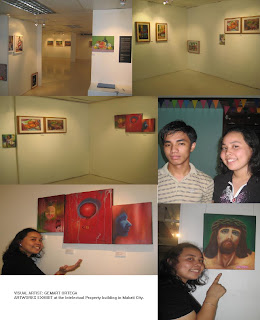
written by: Rem Lucio
(Aileen Tandang, Arnela Almirez, Gwen Kangleon)
Having been around for quite some time now, Payola is an ongoing practice in media. So what is Payola? According to history-of-rock website, Payola comes from the words “pay” and “Victrola” (an LP record player), and entered the English language via the record business. Payola is defined as the illegal practice of record companies paying radio stations and disc jockeys to play particular songs in their stations.
According to Ernie Dela Cruz, who used to work under the Advertisement/Promotion Department of Vicor Recording Company, “Some radio stations receive payola with the station manager, some would go individually (straight to the DJs). Recording companies give out payola as part of promotions of songs. Binibigyan nila ng plugging list (titles of songs) yoong mga announcers na tumatangap ng payola para yoon lang yoong patugtugin nilang kanta.”
Payola comes in different forms. It usually comes in forms of cash or “good time treats”. Good time treats referring to free passes to hotels, restaurants, dinners, dinners, events etc. Even guns are given for protection. The lowest rate of payment one receives for a write-up is 20,000 or 30,000. It depends on the company a media practitioner works for. The amount goes higher if you are a big time reporter.
In the US, Payola goes back as early as the 1920’s. It became more apparent in the 1950’s with the emergence of rock 'n' roll, the introduction of the inexpensive 45 RPM single, radio's shift to Top 40 music once TV commandeered drama, postwar prosperity, and the arrival of teenagers as an economic force. In this period, live performances were taken over by records. The easiest way for artists to gain exposure and sell their records, the labels needed to distinguish their songs from their competitors. Bribery seemed the best way to go thus record companies hired promoters to pay deejays particular amounts to play their records.
One example of Payola done in the US is when in January 1998, Flip/Interscope Records paid a Portland, Oregon radio station $5,000 to play one Limp Bizkit song 50 times over a five-week period. The band was able to generate enough interest to play a successful concert there. Other stations showed interest in their music, and Limp Bizkit broke into the music biz in a big way. However, the argument against pay-for-play, even if the parties are upfront about it, is that it allows big labels to buy their artists’ way onto the charts.
Payola is usually use either for a good purpose or a bad purpose. Either you write a negative or a positive feature on a particular person. It is for either for good publicity or bad publicity. It takes in many forms—apart from promoting songs, it is also done involving writers, editors and reporters to publish particular stories.
It is also done by the government as well. “Yoong mga commentaries, news programs, may mga politicians and government agencies ang nagbibigay para hindi sila siraan sa publiko,” says Dela Cruz.
For Ivy Manat of Ballyhoo Records, she carefully chooses which to receive. “Personally, if you will give me a certain amount, tapos sisiraan ko lang yung iba, di ko gagawin yun. Pero pag binayaran mo ko ng malaking amount pababanguhin kita, ggagawin ko yun kasi still positive.” Furthermore she adds, “Sa akin, ok lang na tumanggap ng payola. If I’m a writer or I’m a journalist, it’s ok na tumanggap ako pero as long as hindi ko sisirain yung tao. Kung i-buibuild-up ko siya ok lang, so kung naiinggit yung kabilang partido, magpabuild-up na din sya. At least hindi kita ida-down. Hindi ko sya titirahin pababa.” She herself has confessed to have done receiving Payolas but only to write good publicity on someone.
In some cases, there are some journalists who will continue to do bad write ups about certain people unless they are given money or “good time treats” in exchange. “May mga ibang journalists na sisiraan ka nila ng sisiraan hangga’t hindi ka nagbibigay. Tapos after mo magbigay mabait na siya sa iyo. Ireretrack niya yung mga sinulat nya and babawiin so nawala na yoong credibility mo. And magugulat yung boss mo bakit ganoon and palalabasin na lang niya may nakameeting siya na nagsabing hindi naman pala talaga sya ganun,” says Manat.
As long as there are people who give out money, there will be people who will continue receiving them. Most media people practices Payola but there are still a few out there who don’t do this kind of practice—those who stick to the ethical side of their careers. When asked if there’s a possibility for Payola to be eradicated from the industry, “No. The saddest part of it [is that] it will be worse, and it will stay forever. Media has lost [its] credibility because of this,” says Dela Cruz.


